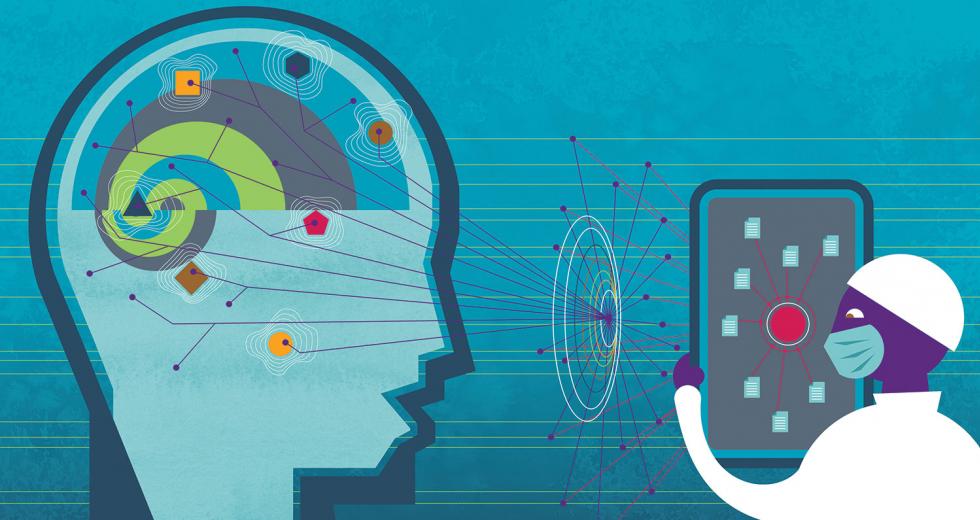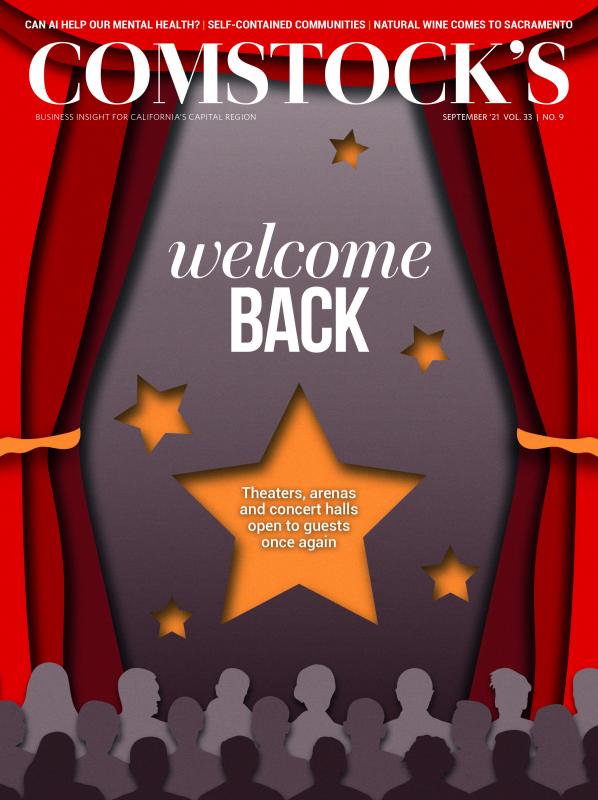The noise came from above at 3 a.m. — a cracking sound, like the roof might cave in. Kate Cordell jolted up in bed. Was there an animal on the roof? No. It turned out to be a human scheming to break into her house through the back bedroom deck.
Cordell grabbed a broom. She jabbed the ceiling where she heard the noise. Nothing. She hit the ceiling harder, then heard the intruder shuffle back the way he came. Through her peephole, she saw him climb down and run off.
This happened three years ago, long before COVID-19 seized the globe. Cordell learned it was a serial stalker in the area. Soon after, she moved to a gated community. But the experience haunted her. In May 2021, during an impromptu company meeting at her office in Folsom, she realized how critical it is for her to have a safe environment — and to not feel guilty about that need.
“It was freeing for me,” Cordell says. “I felt deficient as a person because I would often feel unsafe in the dark. I had to acknowledge for myself that it was OK for that safety bucket to be full. Less of ‘this is a problem’ and more of ‘I need to feel safe.’”
That declaration might as well have been a collective motto for the health crisis of 2020. The ability to identify what she needed for her own well-being underscores what Cordell’s business is about. She is the cofounder and CEO of Opeeka, a Folsom-based technology company that unifies mental health, behavioral health and social services assessments in a single platform.
“I had this idea that if we could bring together various pieces of information and unify them into a ‘person story,’ we could begin to look at how that story transforms over time. We could measure a trajectory of recovery and resilience.”
Kate Cordell Cofounder and CEO, Opeeka
She cofounded the business with Ken Knecht, who is its chief marketing officer. Launched in December 2020, the startup uses artificial intelligence to create a digital story map that predicts strategies for intervention, allowing health care providers to identify trends and patients of all ages to track personal progress.
The platform aggregates data from various sources to create a profile for each patient that clinicians and the patient can access via a personal dashboard. This allows, for example, a patient’s physician to see notes from the patient’s psychologist, if given permission. Every point of data is marked confidential by default. The patient can choose to release the information, but the purpose of the platform is to share only what is needed when it is needed, Cordell says.
“I had this idea that if we could bring together various pieces of information and unify them into a ‘person story,’ we could begin to look at how that story transforms over time,” says Cordell, a behavioral health services data scientist and researcher, who earned her Ph.D. in social welfare from UC Berkeley. “We could measure a trajectory of recovery and resilience.”
Telehealth Is Here to Stay
All over the globe, people had to face the devastating reality of a pandemic in a whirlwind of isolation, deaths, illness, job losses, social injustice and political upheaval. It was a world of uncertainty with no horizon line in sight.
A year and a half after COVID-19 took over, vaccinations led to the reopening of borders, shops and offices. But for some individuals, life doesn’t just snap back on like a flipped switch. Fear of the unknown has taken a severe toll, manifesting in the forms of heightened stress, anxiety and depression — the long-term effects of which may not be known for years. Health systems grappled with challenges for treatment programs, including a lack of workforce and limited capacity. But one key issue when it comes to health care goes back decades, unrelated to the pandemic: communication.
“One of the problems with the health system in general is it’s too competitive, so people don’t collaborate as much as they should,” says Peter Yellowlees, chief wellness officer at UC Davis Health and a psychiatry and behavioral sciences professor at UC Davis.
The call for collaboration has been on the health care agenda for years. A 2018 survey in Futurescan, a publication from the Society for Health Care Strategy & Market Development, found that seven in 10 hospitals and health systems aimed to increase collaboration with other providers (e.g., doctors, hospitals, post-acute care organizations) and payers on population health by 2023. The thinking is that the field will become less siloed under value-based care.
After the disruption of 2020, the push for more collaborative affiliations has become even more urgent, especially as society has shifted from hospitals to the home as the “center of gravity” for outpatient services, according to Yellowlees.
“One of the problems with the health system in general is it’s too competitive, so people don’t collaborate as much as they should.”
Peter Yellowlees Chief wellness officer, UC Davis Health
At the core of this evolving model is technology. The pandemic accelerated the expansion of telehealth services. Telemedicine spiked as patients contacted physicians virtually. A Centers for Disease Control and Prevention report from February 2021 highlights the benefits of telehealth: fewer in-person patients creates more access to care with less burden on facilities and medical supplies, and it reduces disease transmission. Even as COVID-19 rates come down, telehealth trends appear to be staying long term.
“We are going to be providing more tech-enabled health care and services across the mobile health spectrum,” Yellowlees says. “That’s a real silver lining to do with COVID.”
Failure to Communicate
In the medical field, technology isn’t just plug and play. The main obstacle to uniting fragmented health systems is the siloed software many systems still use: They speak different languages with no means to integrate various voices or assessments, says Ryann Vernetson, chief of clinical innovation and technology at the national nonprofit Specialized Alternatives for Families & Youth and an Opeeka Advisory Committee member.
The organization, which serves about 5,000 families annually, is currently in a small pilot with Opeeka. The goal is to collect assessments on the platform from parents, caregivers, teachers, therapists and other important voices in the children’s lives to highlight positive trends and areas that need attention. By putting the most important information front and center in a simple summary, these assessments help providers construct plans of care. This data can be used not only for children and adults, but also to assess a given workforce, so employees feel healthy, listened to, and not overwhelmed or overburdened.
“What is attractive to us is that (Opeeka is) system agnostic,” Vernetson says. “Their solution works with our current electronic health records. … My priority is to identify clinical tools without placing an unnecessary burden on care managers.”
After doing consulting in the mental health field throughout California and many states, Cordell saw the need to focus on whole-person care — and technology as a pivotal driver. Cordell began building the unique software system in May 2020. With information from a variety of health care professionals, the software assembles a person’s data (needs, symptoms, diagnoses, traumas, safety, income, etc.) into a “story” that can be observed by providers and tracked.
Opeeka has a team of about 30 offshore developers and about eight in-house. In June, the startup closed a seed round, raising $2 million from 31 local investors, which will go toward improving the product and expanding into other states. As of July, Opeeka has 10 customers, namely community organizations focused on a variety of mental health issues, including foster youth, adults dealing with substance use and families in domestic abuse shelters, to name a few.
The Human Element
What Opeeka aims to do is aggregate information that supports teams’ ability to heal — in partnership with patients and clients — and empower the patient in an authentic way, says Richard Knecht (no relation to Ken Knecht), managing partner at Integrated Human Services Group. He met Cordell about six years ago and came aboard as an adviser and is now an investor. He has seen the health care industry’s struggle to make this patient-level information available to the patient for a long time.
“We understood that empowerment,” he says, “but have fallen short of giving them information that tells them in plain English what it means and how they can inform their own healing.”
For decades, he says, health rules designed to protect privacy and identity got in the way of health information being exchanged. Providers didn’t want to risk invading a patient’s privacy and patients had fears of being exposed, he says. But the past year saw vulnerable and underserved communities disproportionately impacted by the pandemic. This devastating reality revealed that medical care isn’t the only factor for health and wellness. Housing, pollution, transportation, access to healthy food and other social conditions play a vital role.
“We adapted to the digital environment, but here’s the problem: The very essence of wellness and recovery is rooted in the human relationship. It’s about our capacity to be present with other people who are suffering, and you cannot do that remotely.”
Richard Knechtmanaging partner, Integrated Human Services Group
Richard Knecht predicts another 12-24 months before data begins to reveal the long-term effects of the pandemic, but it did worsen operational flaws in health systems that need to be addressed, such as the importance of data sharing. Aligning for Health, a health care membership association, and many other social-services organizations advocated for Social Determinants Accelerator Act of 2021, which, among other things, encourages greater coordination and accountability through cross-sector information exchange. Other laws coming out, such as Assembly Bill 2083 in California, require the sharing of data across many disciplines for certain populations, pointing to the end of silos of data.
Even with the overdue expansion of telehealth, Richard Knecht doesn’t believe digital tools to be the panacea to health care. The virtues of empathy, vulnerability and compassion don’t easily translate through screens in a virtual arrangement, “when people are only visible from the neck up,” he says. In person, health professionals can read body postures, engage with and respond to patients in a direct way. In a digital setting, that engagement is compromised, he says.
“What I think we’re going to experience is a reckoning in health and human services,” he says. “We adapted to the digital environment, but here’s the problem: The very essence of wellness and recovery is rooted in the human relationship. It’s about our capacity to be present with other people who are suffering, and you cannot do that remotely.”
–
Stay up to date on business in the Capital Region: Subscribe to the Comstock’s newsletter today.
Recommended For You

Connected Care
The pandemic led to a decade’s worth of progress for telehealth in less than a year. What does that mean for the future?
It’s unclear if telehealth will remain on its current trajectory once the pandemic is over, but one thing is clear: Decisions made now will be critical for the future of its innovation.
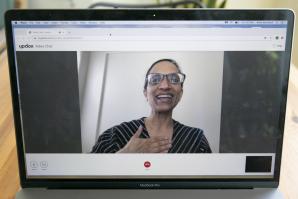
Virtual Medical Visits Are the New Normal During the Coronavirus Pandemic
California doctors are diagnosing anything from appendicitis to strep throat with only a phone during the coronavirus pandemic. Video visits and conversations are the closest doctors can get to patients who are sheltering in place and avoiding potential exposure from doctor visits.
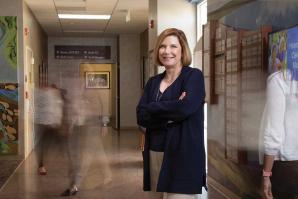
Is the Capital Region’s Health Care Industry on the Critical List?
The region’s health care facilities are beginning what may be a lengthy convalescence when it comes to jobs.
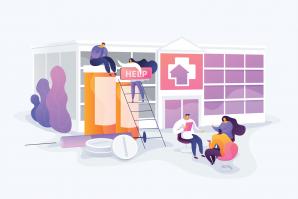
Coping With COVID
As stress levels have soared, treatment programs for substance use battle to keep up
The challenge for treatment programs can be broken down into four
parts: lack of workforce, limited capacity, timing conflicts and
insurance issues.



